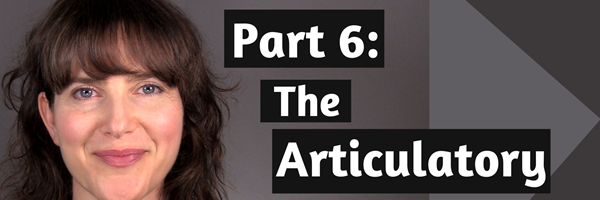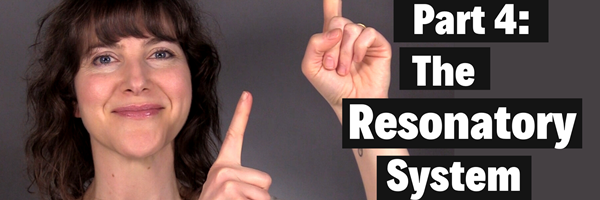(Video Transcript)
This video is part 5 of the Basics of Voice Production series. Make sure to watch the earlier videos that discuss how the voice is made, vocal warm-ups, and exercises to improve your breath support and the resonatory system.
Now let’s talk about specific exercises you can do to improve the next vocal subsystem - the phonatory system.
The Phonatory System
The phonatory system provides the voice with its sound source - the vocal cords. The vocal cords are located just behind the Adam’s apple. When we breathe, the vocal cords open up to allow the air to flow without any obstruction. But when we speak, the vocal cords come together. The air from the lungs pushes the vocal cords open and causes them to vibrate. This vibration is what gives the sound to the voice.
When the vocal cords vibrate, there is pressure coming up from the lungs as the air pushes up through the vocal cords. If there is too much pressure coming up from the lungs, that can mean that over time, the vocal cords have to work harder to keep vibrating. The harder the vocal cords have to work, the more chance there is of injuring them.
The Phonatory Exercises
Next I’ll show you some exercises that will help your vocal cords to vibrate more easily and more efficiently - and the less work your vocal cords have to do to give you the best sounding voice, the better!
The science behind these exercises is a little technical, so I’ll add a link below to a great resource that explains why these exercises work.
But in the meantime, we’ll get straight to the exercises. When I work with clients on improving their vocal cord vibration, I usually use a straw or a styrofoam cup to complete the exercises. But in this video, I’ll show you exercises that don’t require any equipment.
Exercise #1: Say OO on a Comfortable Pitch
Start by saying the OO /u/ vowel on a comfortable pitch. OOOOO. You want to focus on using a lot of airflow as you say OO - think of the sound as being half your voice, and half airflow. OOOOOO. But it’s not a whisper, it’s not OOOOOOO - it’s a good balance of airflow and sound.
To make sure you are putting out enough air, hold a piece of tissue paper in front of your mouth and watch for movement. If you’re using enough airflow, you should see the tissue paper move. OOOOOO. It’s nice and relaxed.
Exercises #2 - 4: Scale, Low, and High
Now use the same OO vowel, but go up and down a scale, and remember to check for the airflow, either with a tissue paper or your hand. OOOOOOO. OOOOOOOOO. Now go as low as you can. OOOOOOOOO. Now as high as you can: OOOOOOOOOO.
Exercise #5: Switch the Sound to V, Z, J, Lip or Tongue Trill
You can switch the sound to a V sound: VVVVVVV. A Z sound: ZZZZZZZZZZ. A J sound: JJJJJJJJJJ. Or you can use a lip trill or a tongue trill. Try all variations, remembering to have a relaxed throat and using lots of airflow, and complete the scales 8 to 10 times.
Exercise #6: Conversation Intonation on OO
Now pick your favorite sound, the OO, V, Z, J, or the lip or tongue trill - whichever was the easiest for you to produce. I’ll use the OO sound at first. I want you to mimic the up and down intonation pattern of a real conversation using the OO vowel. I’ll demonstrate, using the intonation pattern of this sentence: Hi, how are you today? OO, OOOOO. Now I’ll answer with, I’m fine, thanks. How about you? OOO, OOO. OOOOOO.
Now I’ll switch to the V sound, VVVV, and I’ll use the intonation pattern of this sentence: The rain’s really pouring outside! VVV, VVV, VVVVV VVVVVVVV. And I’ll answer with: You’re right - it is! VVVV, VVV VVVV.
In order for my OO and V sounds to feel easy and effortless, I really need to use a lot of airflow to balance out the sound. If you don’t use enough airflow, your voice will sound muffled or squeezed, OOO, VVVV, or you won’t be able to sustain the sound for as long as you need to.
Practice these intonation patterns for a few minutes, until your voice feels easy and light.
Thanks for watching! Stay tuned for part 6 of the voice production series: exercises for the articulatory system! And I'd love to hear from you - contact me to learn how we can work together to perfect your American English pronunciation!



